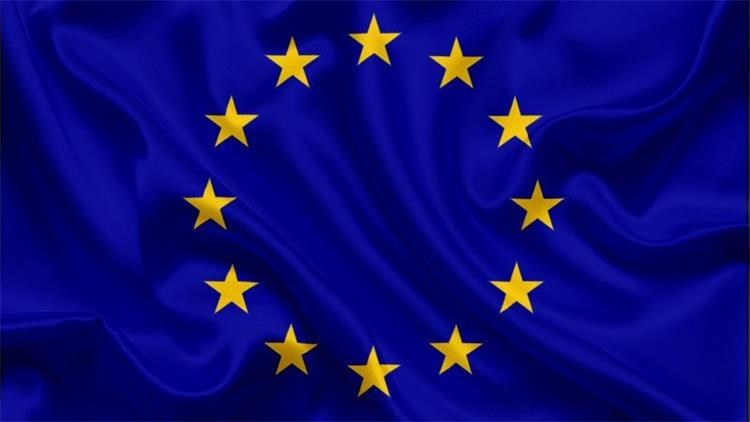- Published: 26.12.2022.
2022 second most important year for Croatia's EU integration process
Croatia is leaving 2022 behind fully integrated with the European Union, joining both the Schengen area of passport-free travel and the euro area on 1 January. After 2013, the year when it joined the EU, 2022 was the second most important year for Croatia in terms of its integration with the EU.
In 2022 Croatia joined a club of 15 countries (the other countries being Belgium, Estonia, France, Greece, Germany, Italy, Latvia, Lithuania, Luxembourg, the Netherlands, Portugal, Slovakia, Slovenia and Spain) which are members of the main European integration projects - the EU, the euro area, the Schengen area, and NATO.In that club Croatia is one of five countries that 30 years ago were single-party Socialist countries, joining it after Estonia, Latvia, Lithuania and Slovenia.
The final decision on Croatia's accession to the euro area was made on 12 July at a meeting of the EU's Economic and Financial Affairs Council (Ecofin).
The Council then passed three legal acts needed to enable Croatia to introduce the euro on 1 January 2023, including a decision on the kuna to euro conversion rate, the central rate being €1 = HRK 7.53450.
The Council also adopted two other legal acts - a decision on Croatia's euro introduction and an amended regulation on Croatia being added to the list of 19 euro area members as the 20th member country.
With those decisions the Croatian National Bank (HNB) governor in September became an observer on the European Central Bank (ECB) Governing Council, and as of 1 January he will be its full member.
The positive decision on Croatia's entry to the euro area was preceded by reports by the European Commission and the ECB on Croatia having met the relevant criteria and aligned its legislation to the relevant requirements.
Croatia is thus on 1 January joining an area that today has a population of more than 340 million and is the second largest world economy, accounting for 15% of the global GDP.
After Croatia's entry, seven EU countries will stay outside the euro area - Denmark, which negotiated an exception and does not need to introduce the euro, Sweden, Poland, Hungary and the Czech Republic, which should join it but have for various reasons intentionally slowed down the process of meeting the relevant criteria because they do not want to give up their national currencies, and Bulgaria and Romania, which want to met the criteria for euro introduction but have still not done it.
Joining the euro area requires implementation of reforms to meet special criteria, and when that is done, there are no obstacles on the political level. The procedure regarding accession to the Schengen area is different.
Meeting Schengen membership criteria not a guarantee
Meeting criteria for entry to the Schengen area does not automatically guarantee entry, which Romania and Bulgaria know best, having been in the waiting room of the Schengen area for 11 years despite having met all the criteria. Their entry is currently opposed by Austria and the Netherlands.
Croatia was given the green light to join the Schengen area at a meeting of EU ministers of the interior on 8 December, and the positive decision required significant diplomatic efforts and negotiating skills.
It had been speculated for a long time that Croatia could be blocked by Slovenia over an unresolved border dispute, and possibly by Austria due to the influx of migrants, but that eventually did not happen.
By joining the Schengen area, Croatia is becoming part of the world's largest area without internal border controls, with a population of close to 420 million.
As of 1 January, the Schengen area will have 27 members, of whom 23 are EU members, the other four being Iceland, Norway, Switzerland and Liechtenstein.
The absence of border checks in the Schengen area brings significant savings and facilitates trade, and Croatia's strong tourism sector will particularly profit from it because most foreign visitors come from Schengen area countries and they will no longer have to wait for hours to cross the border into Croatia.
Rise of living standards
The completion of Croatia's EU integration process with its entry to the euro and Schengen areas is expected to contribute to an even more important goal - a stronger economy and higher living standards of Croatian citizens, who still do not feel sufficiently the effects of those achievements.
Croatia is among the poorer EU countries, with GDP per capita expressed as purchasing power parity, which in Croatia's case is 70% of the EU average, while according to actual individual consumption, an indicator that better reflects the level of prosperity, it is at 72% of the EU average.
Poorer than Croatia, according to those indicators, are only Bulgaria, Hungary, Slovakia and Greece.
Only with higher living standards and their rise to get closer to the EU average can Croatia solve one of its main problems - a large outflow of the population, mostly of its most qualified and most productive members.
Since the country's accession to the EU, a large number of Croatians have emigrated, using the freedom of movement and leaving for richer EU countries where they can achieve their life ambitions more easily and faster.
All former Communist countries have been faced with that phenomenon, and the experience so far shows that emigration trends gradually wane and stop only when the standard of living in those countries gets to some extent closer to the European average.
That should be a major goal for Croatia in the next ten years.
Croatia as well as the entire EU are entering a rather challenging year since there is no end in sight to Russia's war against Ukraine, which is one of the reasons for high inflation, economic slowdown and likely recession. How and when that war will end will largely determine the duration and speed of recovery from the crisis. (Hina)
